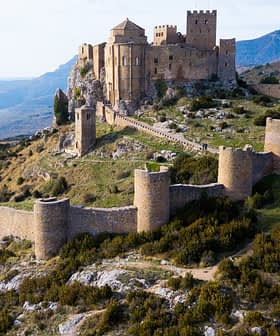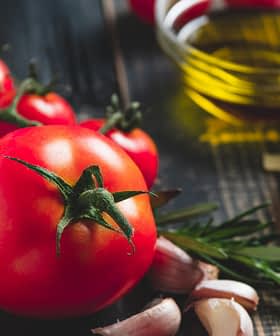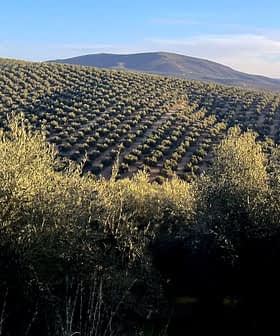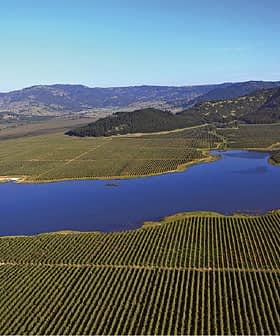Wildfires Are Becoming More Frequent and Intense Globally, Researchers Find
Olive farmers in the Mediterranean basin are among those at the highest risk of increasing and more intense wildfires.
A report by the UNEP and GRID-Arendal predicts an increase in the frequency and intensity of wildfires due to climate change and human activities, with impacts on biodiversity, economic loss, and greenhouse gas emissions. The report emphasizes the need for proactive prevention measures to protect olive groves and other crops vulnerable to wildfires in the Mediterranean, suggesting that governments should prioritize prevention strategies over compensation for affected communities.
Wildfires will become more frequent and intense in the future, according to a report published by the United Nations Environment Program (UNEP) and GRID-Arendal, a non-profit.
The impact of climate change and changes in how land is used for human activities will lead to a 14-percent increase in extreme fires by 2030.
Even under the lowest emissions scenario, we will likely see a significant increase in wildfire events.
Estimates show that their numbers and severity could grow 30 percent by 2050 and 50 percent by the end of the century.
“Uncontrollable and devastating wildfires are becoming an expected part of our seasonal calendars,” the scientists wrote in the report. “Wildfires occur on every continent except Antarctica, and most regions experience weather conditions conducive to the outbreak of a wildfire at some point in the year.”
See Also:Climate Change Threatens Steep-Slope AgricultureAccording to the report, more than 30,000 people die every year from wildfire smoke exposure in the 43 countries analyzed by the researchers.
“Other species also pay the price: besides a devastating loss of habitat, the smoldering swathes of land left in a wildfire’s wake are scattered with the charred remains of animals and plants possibly fast-tracking extinctions,” the scientists wrote.
The researchers provided a few examples of the massive devastation caused by wildfires, such as last year in the Pantanal, the world’s largest tropical wetland that stretches from Brazil to Bolivia and Paraguay.
Fires in the Pantanal destroyed one-third of what is considered one of the world’s most significant biodiversity hotspots. The researchers added that the chance for the wetlands to recover fully is low.
The report also forecasts wildfires of varying degrees over time, depending on how much greenhouse gas emissions will be curtailed in the coming decades.
“By the end of the century, the likelihood of catastrophic wildfire events will increase by a factor of 1.31 to 1.57,” the scientists wrote. “Even under the lowest emissions scenario, we will likely see a significant increase in wildfire events.”
“Not only can wildfires reduce biodiversity, but they contribute to a climate change feedback loop by emitting huge quantities of greenhouse gases into the atmosphere, spurring more warming, more drying, more burning,” they added.
The economic loss caused by wildfires is also increasing over time. In the United States alone, “the annualized economic burden from wildfire [is] between $71 billion to $348 billion (€65 billion to €318 billion).”
According to the researchers, most nations do not assess the damages caused by wildfires. Still, they added, “the situation is certainly extreme; it is not yet hopeless.”
Wildfires at several latitudes are likely to have severe economic impacts by destroying crops and agricultural land, inflicting damage that can take years to recover from.
Olives are among the crops increasingly vulnerable to wildfires, which are often fueled by low levels of soil moisture and an abundance of dry vegetation caused by drought, heatwaves and lack of maintenance.
In relevant Mediterranean olive-producing countries such as Greece, Portugal, Italy, Algeria and Turkey, recent wildfires have destroyed olive growing areas closely connected to the local people’s identity, tradition and income.
Gianluigi Bacchetta, a biology professor at the University of Cagliari in Italy, who was not involved in the UNEP report, told Olive Oil Times that traditional olive growers in the Mediterranean should switch to a proactive approach to prevent wildfire damage rather than a reactive approach.
“We need to work on prevention, which means to take care of our land,” Bacchetta said. “When summer is coming, with its hot temperatures and dryness, those who take care of the olives should mow the grass, remove residual vegetation and any materials that could potentially fuel a fire.”
He added that the countryside should also be constantly monitored in the riskiest seasons, and more action should be taken to ensure that at-risk regions are kept safe.
See Also:Climate Coverage“We witness the phenomenon of traditional groves which are often being abandoned,” Bacchetta said. “In the Mediterranean, this happens when certain crops which once brought income to local growers are not profitable anymore.”
That not only means fewer surveillance and prevention measures but also fuels incidents, including fires generated by illegal waste left in deserted areas or wildfires that start on the side of country roads.
One of the worst wildfires in recent history in Sardinia spread after a car broke down, stopped by the roadside and caught fire.
“From there, the dry vegetation sucked the flames in and in a matter of hours, the wildfire grew way beyond any possible intervention,” Bacchetta said.
Fueled by the winds, the flames spread through a large area between Montiferru and Planargia for three days, enveloping 14 municipalities and damaging historical olive groves.
When such olive groves are burned by fire, farmers and agronomists must wait a few months to identify plants that cannot be recovered and must be removed, plants that might need serious pruning and plants that may potentially be recovered.
“Waiting is essential because that allows us to understand what to do with every single plant affected by fire,” Bacchetta said. “Once a traditional olive grove is hit, the eventual removal of all the burned plants might be very costly and inefficient.”
“The good news is that sometimes the plants survive, and due to their powerful roots, as happened in Sardinia, many of them can quickly recover, be grafted and go back to production in a few years,” he added.
However, the cultural, economic and social landscape of farming communities hit by such extreme wildfires can be damaged beyond the means of restoration and compensation measures.
“Sometimes a fire brings almost complete destruction of the topsoil layers, which means that all the organic material in them is obliterated or vastly reduced,” Bacchetta said. “After that, when the rain comes, it increases the damage by washing away both the top surface layers and those that sit below them, which brings to a huge loss of fertility.”
The more sloping the terrain, he added, the greater the damage done.
“Since many olive groves in Sardinia and throughout the Mediterranean grow on slopes, the risk for those is even worst,” Bacchetta said.
According to the UNEP/GRID-Arendal report, the world “must learn to live with fires.”
Institutions and local communities must learn to manage better and mitigate the risk wildfires represent for human health, biodiversity, livelihoods and the global climate.
The report calls for governments to drastically change their approach to the problem, define new strategies for ecosystem restoration and spend money on prevention instead of compensation for those affected.
Share this article









